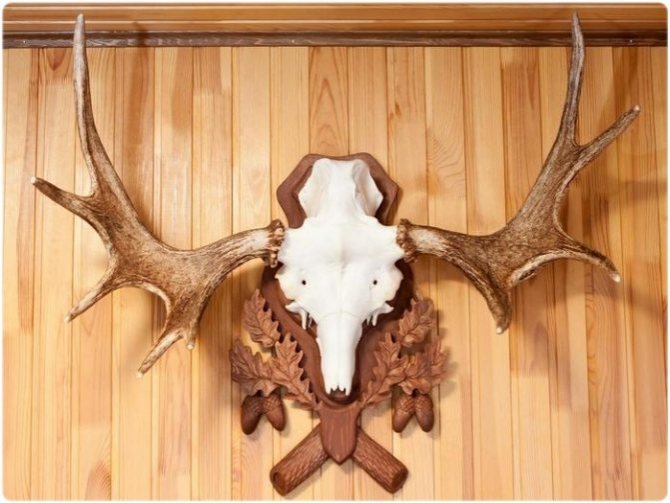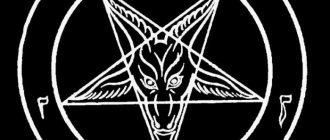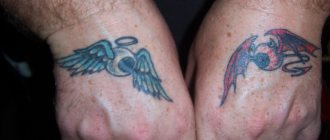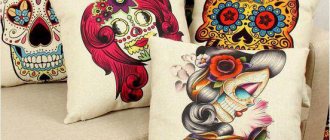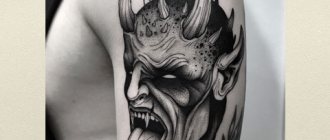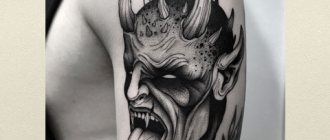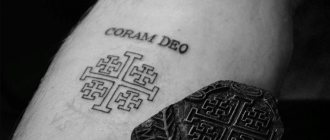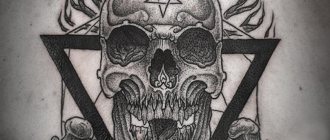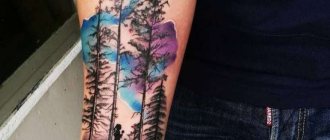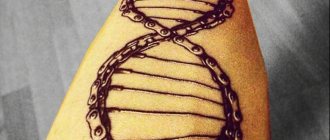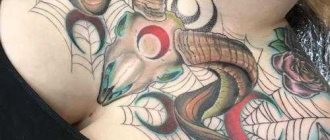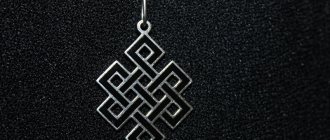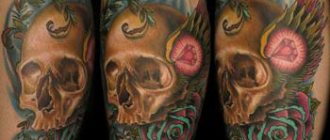In animals since ancient times, people distinguished the reflection of some of their own characteristics. Because of this, the images of animals, birds, fish and reptiles at the dawn of history began to be used as symbols that convey certain "human" meanings. As an example, it is possible to take some Egyptian hieroglyphs having a kind of animals or birds.
From the point of view of magical teachings, man, being a microcosm - an image of the universe and the Creator himself - unconditionally includes and as if carries in himself other living beings. They are all private facets of his soul, splintered off at some point in the cosmogonic process and since then embodied in individual beings, whose appearance and behavior become an expression of these facets.
Although in the narrative of the Torah man was created later than other living beings, it was he who was given the right to give them names. If we think about this statement, the conclusion quickly emerges: since man contains the quality of each of the beings in himself, it is he who is able to reveal it in these beings, to truly know them. For, in the strict sense of the word, none of us can know anything outside of ourselves; but in knowing other beings, man knows himself essentially in various aspects, and it is through this that he is able to reveal from within himself the names with which he later names the animals.
The goat as the bearer of sin. Demons in the form of goats
The name goat in Hebrew[1] indicates qualities such as boldness, boldness, and strength. This word "ez" (עז), taken alone, more often means goat rather than goat. However, its general meaning is the entire species, including both males and females. The Torah text, when referring specifically to a male goat, uses the expression "seir isim" (שעיר עזים), which can be literally translated as "the fluffy of goats." Apparently, goats were associated with their wool. The word "seer," taken alone, is also often used.
This word "עז" as an adjective has meanings such as "bold," "daring." The word "oz" (עוז), meaning strength or power, and the widely known name Boaz (בועז), which is also the name of one of the columns of the Temple, also come from here.
Very quickly, however, we find that since ancient times in the Jewish religion, the goat has been a symbol of sin and vice. According to Torah law, goats are a kind of magnet, attracting to itself all the evil that exists in a person and from which a person seeks to get rid of. This is primarily reflected in the fact that it was the goat that was offered as a sacrifice aimed at cleansing one's sins. There were several kinds of sacrifices: 1) burnt offerings, as an act of pure gift to God, aimed at establishing a relationship with Him; 2) peace offerings, to establish peace and well-being; and 3) gratitude and various other sacrifices. In most cases, the animals offered to the altar were rams or bulls.
A goat was offered only in a sacrifice aimed at the purification of sins. In fact, its name translates simply as "sin" (khatat, חטאת). It was as if the man who slaughtered the goat was transferring his guilt to it and then burning it.
However, the most prominent example of a goat absorbing the sins of others is the scapegoat on which the sins of all the people were transferred on the Day of Atonement (Yom Kippur). This goat was sent to the wilderness, where it took away with it all the evil that had been transferred to it. At the same time on the same day another goat was brought, which was normally sacrificed for purification.
"And he shall take two goats, and place them before God at the entrance of the tent of the congregation. And Aaron shall cast lots upon the two goats: the lot one for God, and the lot the other for Azazel. And Aaron shall bring the goat upon which the lot is drawn for God, and he shall offer it as a sin-offering. And the goat, whose lot is for Azazel, let him be set alive before God, to make atonement through him, that he may send him unto Azazel in the wilderness... And when he hath finished cleansing the sanctuary, and the tent of the congregation, and the altar, he shall bring the living goat: and Aaron shall put both his hands upon the head of the living goat, and shall confess over it all the iniquities of the children of Israel, and all their crimes, and all their sins; and shall put them upon the head of the goat, and send it away with the messenger into the wilderness. And the goat shall bear all their iniquities in the land of the uninhabited; and he shall send the goat into the wilderness" (Vayikra 16:7-22).
The very expression "scapegoat" has become one of the most famous and common of all, coming from the Torah: it is usually the name given to a person on whom someone else's guilt is shifted. This further cemented in the collective consciousness the symbol of the goat as the bearer of guilt or sin (not necessarily one's own).
Azazel is none other than the demon of the wilderness who took in the sins sent to him. Among the sages of Israel in ancient times there was an opinion that sending the goat to Azazel was something like a bribe or payoff to help prevent the demon from testifying against the Jewish people in the heavenly court. In the Chapters of Rabbi Eliezer (ch. 46), Azazel is actually identified with Samael, the head of the demonic world. This text plays up the dialogue between God and Samael, in which the latter complains that he was not given authority over the Jews. When he receives his "bribe" in the form of a scapegoat of sins, he himself begins to praise the Jews before God, saying, "You have a people on earth like the angels of heaven."
Here it should be noted that the name Azazel (עזאזל) begins with the same letters that make up the name goats \ goats. Apparently, this demon itself was represented as something like a big goat, since the like attracts the like to itself. This assumption is doubly justified, since demons in general tend to take the form of goats, and in the text of the Torah they are also repeatedly called "goats". If this statement is true of Azazel, whom, as mentioned above, the ancient Midrash identifies with Samael, it is not surprising that Samael himself in the magical tradition of the West was always represented with a goat's head.
Literally the next chapter of the Torah gives another law after the scapegoat laws: all sacrifices that were slaughtered in the field must be brought to the temple and offered to God:
"That the children of Israel should bring their sacrifices which they cut in the field and present them to God...and that they should no longer cut their sacrifices to the goats with which they are carried away" (Vayikra 7:5-7).
Commentators, with virtually no disagreement, argue that by "goats" here they mean demons. From the word "more," they conclude that the Jews had indeed made sacrifices to demons in the past. The Ramban believes that this took place while the Jews were still in slavery in Egypt. He also explains the reason why the demons are called goats in Scripture: "Most probably because the madmen see them in the form of goats" (commentary on Vayikra 17:7).
In the same sense "goats" is understood from the description the prophet Ishaya gives of Babylon after God brings invaders upon it and they destroy it to the ground:
"And the beasts of the desert will lie there, their houses will be filled with owls, ostriches will dwell there, and demons (goats) will dance there" (Ishaya 13:21).
Description of Baphomet.
The description of Baphomet provided by Levi is used in modern esoteric literature. Baphomet is a rather intimidating creature in the guise of a goat-headed idol.
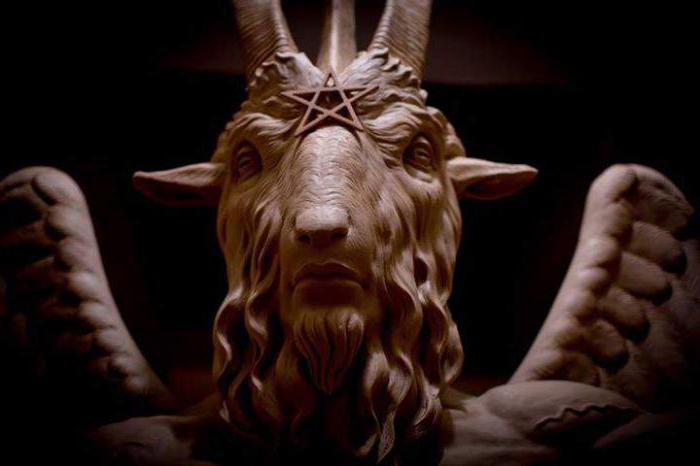
The goat bears the sign of the pentagram on his forehead, with one dot at the top, which is a symbol of light. One of his hands points upward toward the white crescent Hesedah (good), while the other points downward toward the black star Geburah (evil).
One of his hands - a woman, the other - a man. The flame of intelligence shining between the horns is the magical light of universal balance, the image of the soul, rising above existence as a fiery essence. But at the same time it is tied to matter, shining above it.
The head of the beast expresses the horror of the sinner, whose material needs and earthiness, must be punished solely because of his renunciation of the Most High and nature. The soul is not considered sensitive in the non-material world, but can suffer and feel during the painful process of materialization.
A twig instead of genitals symbolizes eternal life. The body of the beast is covered with scales. The half circle above the god symbolizes the atmosphere of fear, and Baphomet needs feathers to gain the ability to soar through the air. The idol possesses a powerful chest, feminine in development, and the hand of a sphinx of the occult. So who is Baphomet? A photo from Levi's treatise on the dogma of mysticism demonstrates this perfectly, at least describing his appearance.
The goat in black magic
Having thus ascertained that demons since ancient times have appeared to man in the guise of goats, we will no longer be surprised that magicians who wished to come into contact with them used the same images in their ritual practice. Like the ancient Jews, who were "fond of goats," they made sacrifices and incense to attract demonic power to their side.
Certainly, medieval European magic adopts the Kabbalistic model of the universe. In many respects it is heir to those ancient formulas and symbolism that Christianity at one time borrowed from Judaism. You can meet quite a few talismans and pentacles that contain the symbols of the goat. As a rule, in this form, various demonic beings appeared in the spiritual vision of those who practiced black art.
Talisman from the Black Hen grimoire
In the Black Hen grimoire, we see a talisman with a goat as if coming out of somewhere under the ground - an obvious allusion to the penetration of demons into our world from the lower spiritual realms. The talisman is surrounded by the names of several demons in Latin.
Equally famous is the demon Lucifug Rofocal, represented in the Great Grimoire. His image is placed in the title of this article: there he looks like a dancing goat with something like a tambourine and a hoop around his neck[2]. In the same book there are other images of Lucifugus - partly human, partly goat-like, but always with horns.
However, "lucifuge" is a nominal name, not a proper name. It is the opposite of "lucifer" in meaning. If Lucifer is a bearer of light, then Lucifug is a runner from light. Many demons can be called lucifuge: behind this term is not the usual vulgar notion that demons only appear at night, but a deeper Kabbalistic truth - demons resist returning to the divine world. After the breaking of the vessels in the spiritual worlds described by the Kabbalists, they created their own world of klipot, and now their reintegration into the worlds of light depends largely on the efforts of man, using magical means to do so (this topic is covered in more detail in the article "Goetia. Order and Chaos").
Eliphas Levi was probably the first to associate the muzzle of the goat with the figure of the pentagram. Praising this most powerful magical sign, he exclaims:
"This is the star of the magicians and the sign of the Word made flesh. Depending on the direction of its rays this supreme magical symbol can represent order or disorder... it can be sanctification or profanation, Lucifer or Venus, morning or evening star. It is Mary or Lilith, victory or death, day or night. The pentagram with two rays up represents Satan as a coven goat; when one ray goes up it is the sign of the Savior. A pentagram is a figure representing the human body with its four limbs and head. The head of the human figure below, of course, represents a demon, that is, intellectual overthrow, disorder, madness." (Ritual of Higher Magic, ch. 5).
A clear demonstration of these assertions can be seen already in "Practical Magic" by Papius, who was a passionate follower of Eliphas Levy from a young age. In the section on talismans, Papius cites two drawings intended for favorable and destructive operations, respectively.
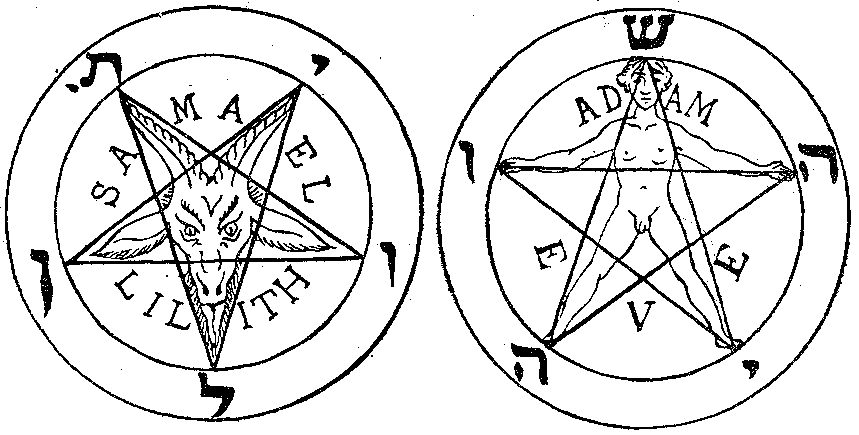

A pentagram with a human figure inside has already been used in H. K. Agrippa's "Occult Philosophy" (book 2, ch. 27), where it was intended to reflect the different proportions of the human body. Here it is also surrounded by the letters י-ה-ש-ו-ה. In the Christian Kabbalist reading, this is how Yeshua, that is, the name Jesus in Hebrew, is spelled[3]. In the central part are the names of Adam and Eve in Latin.
As for the inverted pentagram with the goat's head, the names of Samael and Lilith, the main pair of demons at the top of the clippot hierarchy, are seen here in the center. Previously, a reference was made to Rabbi Eliezer's Chapters, where Azazel is identified with Samael. This ancient Jewish demonology, which the Kabbalah absorbed, also served to compose this mascot, in which Samael is represented by the muzzle of a goat. On the rim around the pentagram are the letters ל-ו-י-ת-ן, forming the word Leviathan (Leviathan).
Recommendations
A few tips for those who still can not decide on such an unusual tattoo:
- First, choose a suitable place for the application. If you want your beautiful tattoo to remain inconspicuous, then make it, for example, on the back or ankle. If, on the contrary, you want to show off the drawing, then put it on your arm. Often such tattoos are done on the calves or thighs. And some choose the back. But it is not recommended to apply such an image on the chest, because it is believed that only the most intimate should be near the heart.
- Even the darkest tattoo will be made more lively and interesting by bright colors, so introduce a little juicy colors to the skull and it will be perceived in a completely different way!
- To choose a suitable option, you can study the examples presented on the Internet or in the catalogs of tattoo masters.
Now you know everything about such a tattoo!
Capricorn and the letter Ain
As a symbol, the goat has not been bypassed by astrology. One of the zodiac signs - Capricorn - in ancient times was represented as a goat with a fish tail. This image comes from Greek mythological representations, which were later borrowed by the Arabs as well. The Arab astrologer al-Biruni in his "Book of Exhortations" refers to the "four-legged" signs of Aries, Taurus, Leo, the back half of Sagittarius (Centaur) and the front half of Capricorn[4]. All this also indicates that Greek and early Arab astrologers noted in this zodiac sign, in addition to the main earth element, also some presence of water.
In Jewish astrology Capricorn was represented as a goat (גדי), without any fish tail. The earliest extant Kabbalah book, the Sefer Yetsirah, puts the Hebrew letters in correspondence with all the signs of the Zodiac, as well as the planets and elements. The letter Ain is thus associated with Capricorn. Its very image resembles raised horns.
The letter Ain in the form of a skull with horns is an expression of its diabolic nature.
This letter in the Kabbalistic tradition is also enshrined as an "evil" letter. Its "wickedness" is easily understood by analogy with the already considered pentagram, turned two rays upwards. As the masters of occultism explain, such form indicates that duality reigns at the top. The unity is hidden and replaced by an irresistible dualism of warring principles. When unity is at the top, we can expect it to reconcile and unite all the private forces under its rule; but if dualism has penetrated to the very top, it promises division and conflict for all other forces as well.
However, the literal translation of the name of the letter Ain does not mean horns at all, but the eye. Already in the Talmud it began to be used as a hint of "evil eye", that is, the introduction of the evil eye and spoilage. There is a well-known statement of one of the sages of the Talmud (Bava Metziya 107 b): "Ninety-nine die from the evil eye, and only one - from earthly causes. The book of Zohar (Bereshit 2b) tells how all the letters came to G-d one by one, and each letter asked him to create the world exactly with it. The Creator rejected all letters except for Beth. He listened to each of them and then answered why He would not accept it to create the world. But God wouldn't even listen to the letter Ain; He immediately drove it away, saying that it was the beginning of the word "sin" (עון). After all we have studied before, this conclusion seems perfectly logical. Ain is Capricorn, the sign of the goat, which precisely bears all sin and becomes, in a sense, the universal ruler of sin itself.
In fact, not only does the word "sin" begin with this letter, but also the word "goat" (עז), which has already been discussed at the beginning of this article, as well as the name Azazel. All of these observations clearly line up in a single semantic line.
The fact that Capricorn, as one of the twelve sectors of the ecliptic, has become the embodiment of this "devilish" power, is not a coincidence. The qualities of each sign of the Zodiac are determined in astrology by the element to which it belongs, as well as the planets that have an abode or exaltation in it. If one considers Capricorn from this perspective, the reason for its characteristic will quickly become clear. As an earth sign, Capricorn is a home for Saturn and an exaltation point for Mars. These two planets are "evil" in classical astrology. Medieval astrologers called them the Pest, contrasting the Benefactors, Jupiter and Venus. The fact that both pest planets at once receive a boost from their presence in Capricorn, thereby revealing a certain affinity of their energies with this sign, eloquently testifies also to the nature of Capricorn itself. In the entire zodiacal circle, there is no other sign that would "shelter" both of these harmful planets.
Tattoo of the skull as a skull and protective symbol
The ancient Slavs, like many other peoples, considered it true "fenshuem", by today's standards, to put in your home the skull of the killed enemy or sacrificed (animal). Such a skull protected the dwelling from evil spirits. A mounted skull on a fence or a marker that delineated the boundaries of the territory could not only scare away evil spirits, but also "spook the neighbors".
The meaning of the Mexican skull - no negativity!
Mexicans have a holiday that is directly related to death - "Day of the Dead". The symbol of this holiday is the skull, which reminds man of death and its inevitability. However, the holiday itself promotes the theory of reincarnation and the endless rebirth of all living things. For Mexicans, a tattoo of a skull with a crown will mean this - in the next life, there will definitely be more luck!
Akran Devil in the Tarot deck
In the English Tarot system, the letter Ain and the sign of Capricorn correspond to the senior arcana Devil. After all that has been shown before, this correspondence can only be considered a confirmation of the obvious. In different decks, the Devil is depicted differently, depending on what one wants to emphasize. In A. Waite's most famous and popular deck, following the earlier Marseilles Tarot, the Devil is depicted as the figure of a goat on a throne, to which a man and woman - Adam and Eve after the Fall - are tied by chains or ropes. Here the Devil is shown as a freedom-depriving enslaver, showing the Saturnian component of the overall energy of Capricorn - the idea of limitation, fatalism, pressing fate.
The Devil in the Tarot of Waite
Between the horns of the Devil in Waite's deck is an inverted pentagram, the same one we read about in Eliphas Levi and Papus. In all cases, the Devil in the Tarot is usually depicted with wings, hinting that he is a fallen angel who was once created for heavenly life.
The Martian aspect of Capricorn is better reflected in the Hebrew Tarot, where this card depicts the fight scene between Yaakov and Samael. According to commentators, the creature, the duel with which is described in the Torah (Bereshit 32), was exactly Samael - the angel, protecting his brother Esav[5]. There is no Saturnian idea of restriction and deprivation of freedom here, but there is a hint of the energy of struggle, typical of Mars, which is also present in Capricorn.
Kabbalists traditionally associate Mars with the fifth Sphira on the tree of life, Gvura. Its name indicates strength and courage. It is here that we find confirmation of what we began this analysis with: in the Hebrew word "goat" (עז) in its original sense means boldness, courage and strength. The pentagram, too, as a figure with five corners, belongs to the fifth Sphirah. Perhaps this is where we should look for the deep divine meaning behind this grim figure.
The arcana Devil in the Hebrew Tarot
It was this boldness and audacity that led the demons to their downfall. Wanting infinite freedom, they found themselves the cause of restriction and slavery. But this flame of freedom has not died out: it still burns in the form of the torch of Prometheus, depicted in the hand of the Devil in the Tarot. This rebellious spirit keeps man awake, as if he were pushing all of nature, making it move. As long as this universal Goat - depicted by the prophet dancing on the ruins of Babylon, and in ancient mysteries shown dancing in nature by the god Pan - continues his dance, man will continue to strive, to seek, to struggle. The presence of evil leaves no room for rest, but evil is only the wrong form behind which the desire for life hides. In the end, these searches and strivings, conditioned by the darkness that remains in one's soul, inevitably lead one to the discovery of the light. Then, as the teachers of the Talmud said, "the angel of death will turn into a holy angel."
Are there guidelines for tattoos with a "skull" in different combinations?
Before you go to the master in a salon to get a tattoo with a skull, decide on a few important points:
- purpose - think about what you need a tattoo on your body for;
- Location on the body - compare the desired sketch and the area on the body so they are in harmony;
- Emotional message - decide whether it will be a good-natured or a frightening picture;
- additional elements - the skull alone may be low-informative, so complement it with suitable characters, symbols and details;
- Style - choose how to perform a tattoo with a skull, choose a color scheme;
- Image - assess to some extent corresponds to your image, way of life, the sphere of activity.
Do you think the skull is too aggressive a tattoo?
YesNo
Notes
[1] According to tradition, Adam used a language that later became known as Hebrew (Hebrew). With the letters and words of this language, God created the world, and man became the continuation of this creative process.
[2] Perhaps he is shown dancing, following the "dancing demons" in the ruins of Babylon mentioned by the prophet Ishayah, whom we quoted earlier.
[3] In fact, Yeshua should be spelled differently: יהשוע or ישוע. The Kabbalists who developed the spelling that is represented on the pentagram in Papius assumed that the name of Jesus should contain the name of God (י-ה-ו-ה), and that the letter Shin, inserted in the middle of it, symbolizes the Holy Spirit.
[4] This is strange, because even if one were to actually divide Capricorn into halves, only two legs would remain in his front half, not four. In the case of Sagittarius, there is no such problem, since the centaur's "front half" is represented by a human torso with arms, while the "back half" is a horse body that has four legs.
[5] Esau himself was nicknamed "Seir" because of his hairy body. The same word, as we saw earlier, is used in the Torah as the name of the male goat. Thus, the goat became a symbol of Esav and his descendants. The land in which Esav's descendants lived also came to be called "the land of Seir" (the land of the goat). In this context, it was also logical to depict Esav's patron angel as a winged goat.
For men
Sketches of men's tattoos, as a rule, are characterized by brutality. It can be a stylized black and white image that reeks of the theme of death.
Tattoos on the hands are just gaining popularity. Before picking up a sketch for such a work, there are a couple of nuances to consider. First: the place is always in plain sight. Second: you need to think carefully about how to position the sketch. During a meal or during an important tense conversation, people tend to gesticulate a lot.
Most often the skull tattoo is placed on the hands. The tattoo is placed on the wrists, forearms and shoulders. Sometimes even on the hands.
The skull on the face is a common search term. But, it has nothing to do with the popularity of this place for tattooing. This is how people try to find the name of a Canadian tattoo model.
Rick Genest (born August 7, 1985, Chateaugue, Canada) - Canadian model from Montreal, better known as Zombie Boy (Zombie Boy) because of the tattoo depicting a human skeleton. Tattoo variations of the skull in the crown.Wiki
The image in which the skull is topped with a crown is found more often than others among the sketches of such tattoos. Also, popular can be called a sketch: skull of a goat, bull, ram, Indian, skull with wings, in a beret.
Choosing a place for the application
Choose the place for the application of the tattoo with the image of a goat should be carefully, because this motive can be perceived very ambiguously. Courageous natures, not constrained by conventions, can choose the open areas of the body, such as hands or feet. If you fear that having a tattoo can affect your career and social status, it is better to choose parts of the body that can be hidden under clothing. Then only people close to you will know that you have a tattoo. You should be especially careful if you're planning to perform a tattoo with a goat symbolizing a commitment to Satanism. After all, views may change over time and it will be very difficult to get rid of the tattoo.
As a frequent visitor of various esoteric forums, the author of these lines has not re-read anything. However, after reading such topics that take one's breath away and the tears of tenderness begin to flow from the eyes, for such silliness should be wandered over the world and searched. And here you go ... and completely free ... Well, at least this dialogue ...
This nice conversation inspired me so much that I thought: why not?
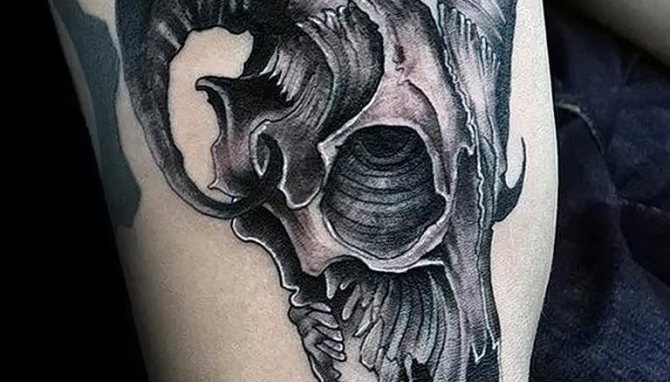

Here you can learn all the most interesting about the meaning and significance of the goat skull tattoo, see photo examples of ready-made tattoo designs, learn interesting facts about their meaning, interpretation and history in the tattoo. More examples here:
- Goat skull tattoo photo
- Sketches of the goat skull tattoo
Styles of execution
The goat tattoo, the sketches of which are presented in the article, can be performed in all existing styles. People with respect for Satanism can do such tattoos in an engraved style. In this case, the image resembles illustrations to medieval tracts.
In the styles of old-school and new-school goat can look bright and optimistic. Ribbons with quotes, compasses, clocks and even flowers can complement the image. Although the combination may seem eccentric, the idea can play up in a very interesting way.
It is possible to make a tattoo with a wild goat in a graphic style. In this case, the image looks as if it is based on an illustration from a zoology textbook. Usually a graphic style tattoo is accompanied by brightly colored strokes that resemble watercolor "blots," and geometric patterns that make the tattoo complete.
Realistic goat - a tattoo that not everyone will dare. However, this work is sure to attract to its owner a lot of attention. Also, you can choose the style of thrash polka, which suggests the expression, brevity and eclecticism style. Tresh-polka allows you to play in the graphic expression of complex philosophical ideas.
Tip: Determine the style of tattoo is not easy. Show the master works that seem attractive to you, or even bring him an aesthetic from your point of view of illustrations. This will help determine which style is right for you.
The meaning of the tattoo.
Many regard the image of skulls only as symbols of Satan himself, or even as empty pictures. But the goat skull tattoo has a different meaning in the first place: it is a kind of helper. Goats are considered the bearers of vitality and productivity. The goat tattoo is a symbol of freedom, creation and abundance. By the way, the "horn of plenty" does not in vain resemble the horn of this very animal.
Along with courage and manliness, such a tattoo has a somewhat humorous meaning. The owner of such an image is able to experience all the troubles of life with optimism and laughter.
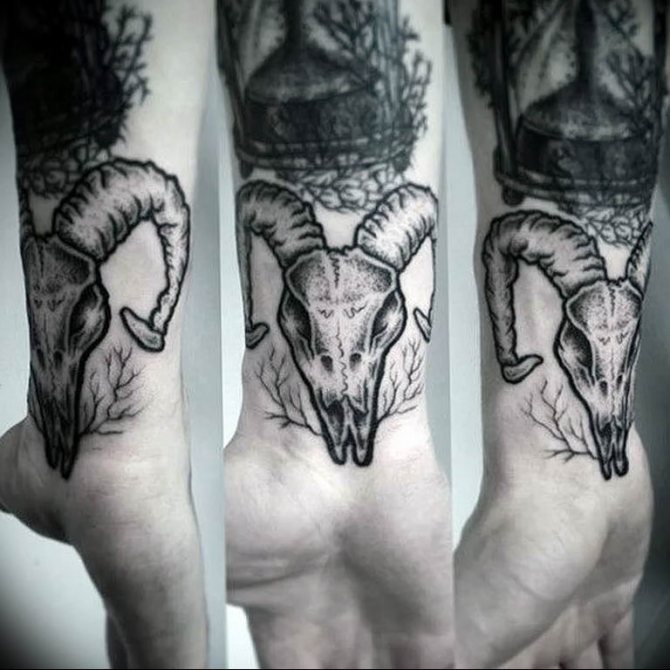

Naturally, there is a similar tattoo and mystical side. All because the goat was considered a servant of Satan, helping him in dark matters. The image of his skull enhances the effect of the rituals carried out, and also helps to refer to the otherworld.
General characteristics of the person who chose the goat skull tattoo:
Execution of the tattoo.
Often the skull tattoo is performed in the style of oldskul, prints, blackwork or newskul. Places on the body, which often choose to impose such a tattoo - the forearm and chest. The skull becomes a special meaning surrounded by flowers, leaves or trees, because in such a composition combines life in its blooming and fading.
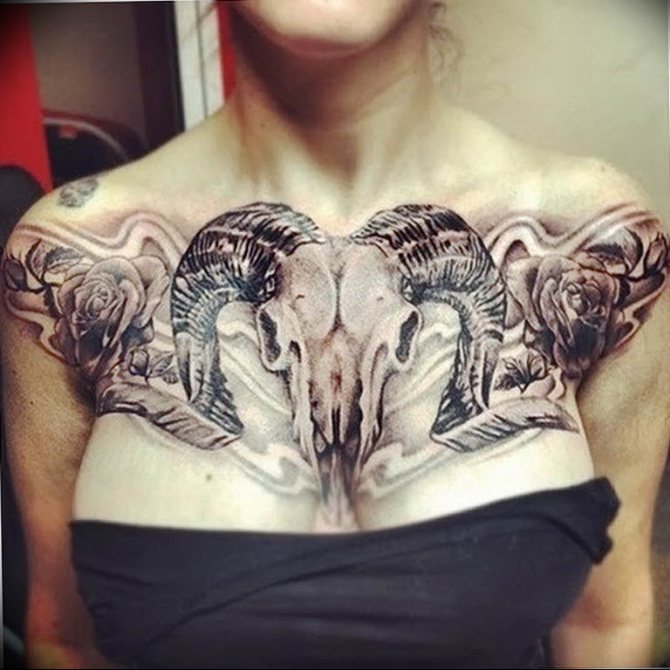

The skull and geometric patterns, clocks or compasses are also considered a winning design. However, each person chooses their own unique style of execution, as well as in what place the cherished image appeared.
Any tattoo has its own sacred meaning and can bring the wearer both positive and negative energy. But the real power of the tattoo is acquired only by a strong person who can decide for himself what he puts in a particular image.
Watch the video:
ADDITIONAL MATERIALS:
- Goat skull tattoo photo
- Sketches of the goat skull tattoo
The text of the article was prepared by: VIKTORYIA_SANTH

